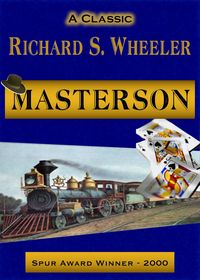The Random Ramblings blog takes part in a Friday meme that quotes the first sentence of book and the fifth sentence of the 56th page. He chose my book MR. MONK IS CLEANED OUT.
The first line is:
Some guys showed up the other day at the house next door, mowed the dead lawn, and spray-painted it green.
And now, for the Friday 56, I present the 5th sentence on page 56.
I also know that anyone who has evidence that could help solve a murder has an obligation to share it with the police, regardless of whether the police have just fired you and your comely assistant.
To be honest, I like both of the sentences. They aren’t exactly moving the story forward, but I find them amusing and give a great feel for the tone of the book.
Sounds like a fun meme. Speaking of MONK, Ed Gorman gives CLEANED OUT a rave. He says, in part:
One of the things that makes this series so distinctive is the full and realistic portraits we get of Natalie and her daughter Julie. The writing here is especially strong. Lee Goldberg is good at describing the way we live now.
The old wrestling come on “This time it’s personal” applies here because Monk plans to trap, humiliate, debase and defoliate the “dude” (who said Monk is out touch?) who took his money.
A truly artful comedy that has a lot to say about the people who robbed us blind over the past three decades.
Thanks, Ed. Here’s the first line of his book DARK TRAIL.
The cigarette had two or three good drags left and Leo Guild was happy to take them.
And here’s the fifth line of page 56.
“He said that he didn’t know you were a man of honor.”
Those two lines actually do a pretty good job of conveying the feel of his terrific western.












